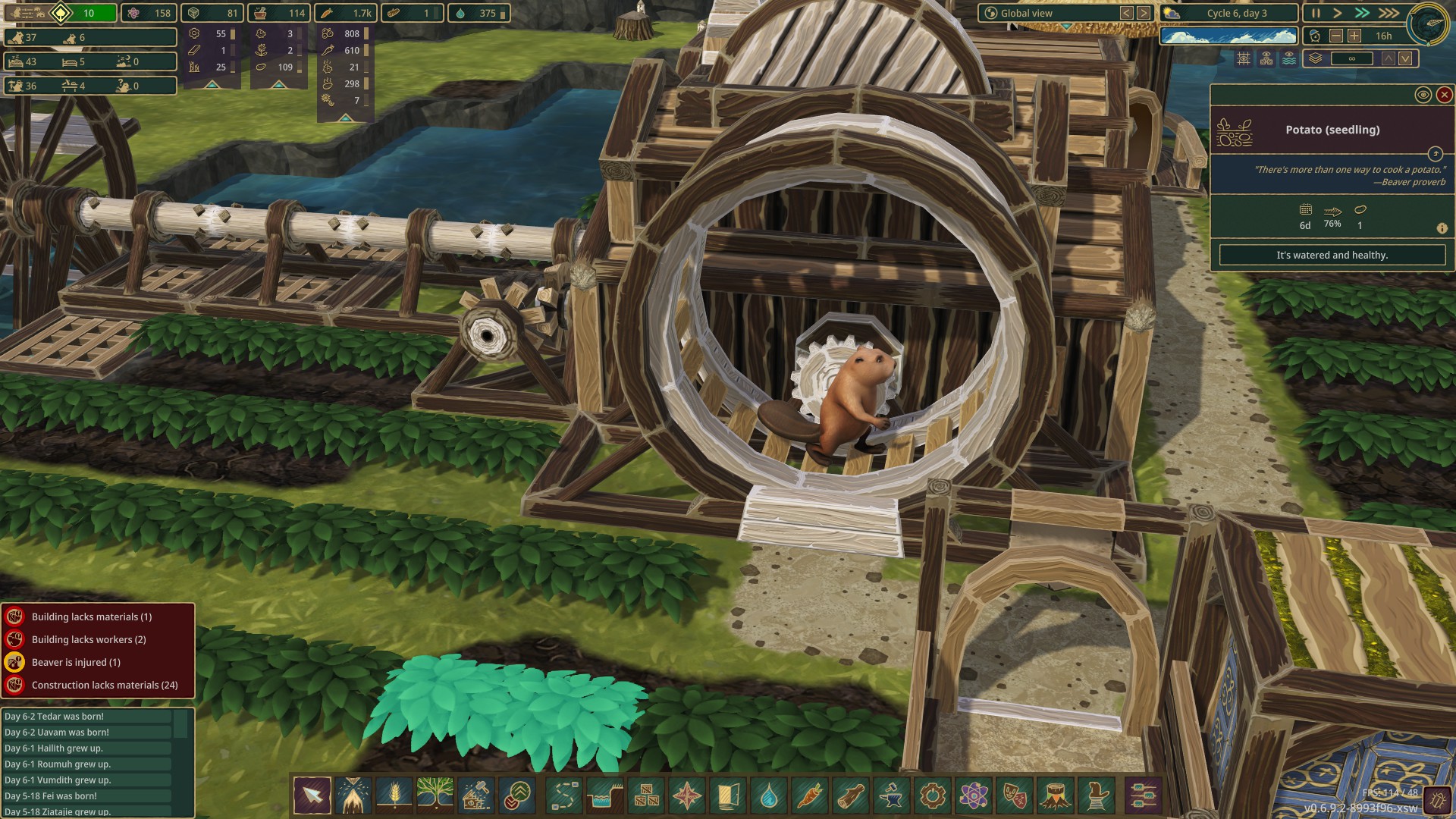For this report, I’d like to introduce you to Timberborn, a game I discovered through Steam. As PC gamers know, Steam is a fantastic platform not just for popular AAA titles, but also for discovering quirky and creative games from indie studios.
In the documentary, Video Games: The Movie, one of the commentators mentioned how independent developers can be more agile and creative than the big studios. The game Timberborn is a wonderful example of this type of game.
Game Overview
Timberborn, developed by Polish game developer studio Mechanistry, was officially introduced in 2021, but is still considered an early access release, so the developers are still responding to feedback from the players and making adjustments to the game as it moves along.
Gameplay Mechanics
Timberborn is a city-builder simliar to SimCity, but instead of managing humans, you guide a colony of beavers rebuilding society on a post-apocalyptic Earth. You must address the beavers’ needs: water, food, housing, employment, and recreation. The game features complex systems where elements like logging, farming, and power and water management interact to support the beavers’ well-being.
For instance, lumberjack beavers cut down trees for logs, which are then processed into planks and gears. These materials are essential for constructing various buildings and maintaining the city’s infrastructure, including the forester’s house, which allows beavers to re-plant the trees they have cut down. Eventually, you can also mine and smelt metal for advanced construction.
Resource Management and Seasonal Cycles
Timberborn provides detailed statistics on buildings, districts, and individual beavers, such as hunger, thirst, and happiness. You can adjust the population by migrating beavers between districts and modifying their workdays. Since beaver children need to eat/drink/play but don’t work, a larger population could put you in danger of running out of food or water if you aren’t careful.
Seasonal cycles, including droughts, necessitate water stockpiling and dam construction. Recently, a new feature introduced “badwater,” a radioactive fluid requiring careful management.
Innovative Building Features
While so far this may sound like a cross between SimCity and Factorio with the addition of cute beavers, what sets Timberborn apart is its vertical building capabilities. Beaver lodges can be stacked, and stairways and platforms can create multi-level structures, allowing for creative city designs.
If your city gets big enough, you can even build wooden beaver robots that can work 24 hours a day and make life easier for the beavers. These of course introduce new levels of complexity moving forward.
Educational Elements
Timberborn incorporates elements of constructionism and constructivism, allowing players to build the play area and set their own goals. Although it lacks direct social interaction that would make it truly social constructiveness in the vein of Vygotsky, the game fosters a sense of community through forums and feedback between developers and players.
Preparing for droughts and dealing with population growth help players understand complex issues related to the readiness and development of society. Similar to other city builders, the simulation allows us to consider the needs of a healthy society of non-humans.
Cultural and Social Impact
An in-game event that highlighted the indie nature of Timberborn was the developers’ response to the Russian invasion of Ukraine. Mechanistry added Ukrainian language options and sunflowers, a symbol of Ukraine, as a gesture of solidarity.
Conclusion
Timberborn exemplifies the creativity and agility of indie game developers, offering a unique and educational gaming experience. It combines city-building and resource management with innovative features and a strong community-driven approach.
The following video contains about 20 minutes of my gameplay in Timberborn:

Leave a Reply